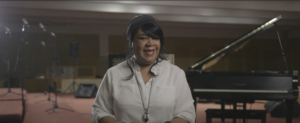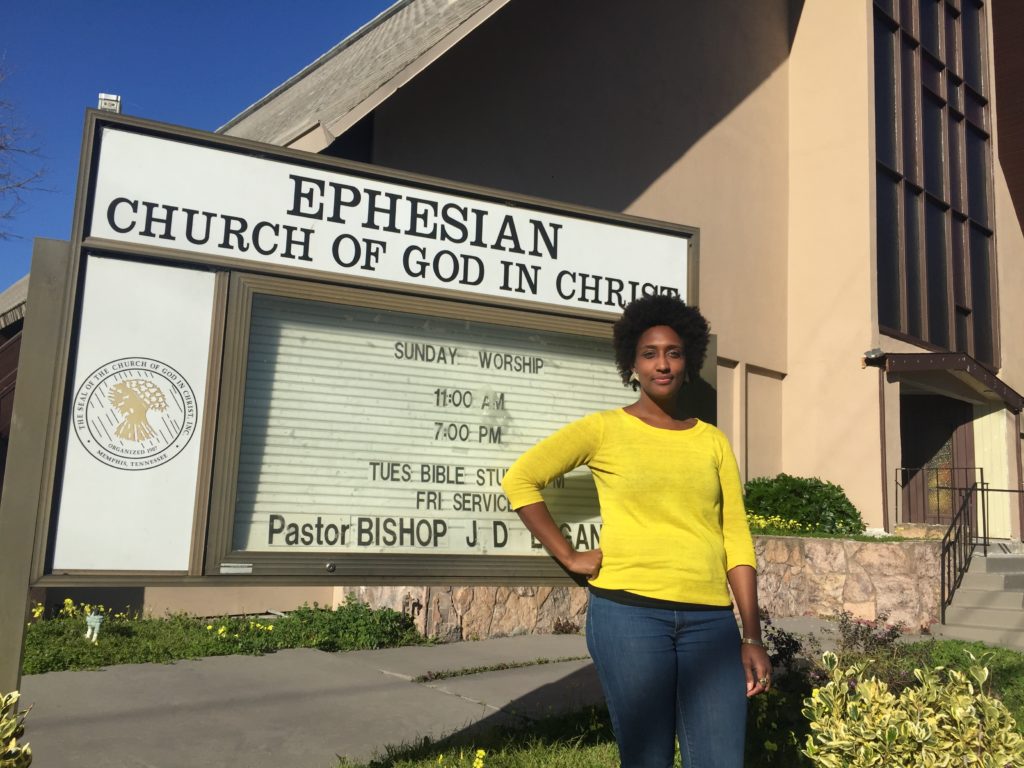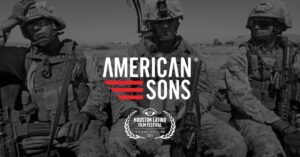I hope everyone who needs to feel inspired, experience hope, and feel the power of music sees this film. No matter your faith, the global collective has suffered together like no other time in recent history, and it is my hope that this will serve as a much-needed reprieve...” – Krystal Tingle, Director & Producer
The gospel music mega-hit “Oh Happy Day” made international fame in 1969 when it became the first gospel song to be featured on mainstream radio. Though based on an 18th Century hymn, it was the 1960’s arrangement by Oakland choirmaster and legendary gospel musician Edwin Hawkins that made the song a worldwide crossover hit. Filmmaker Krystal Tingle tells the story of “Oh Happy Day” and the teenage Bay Area choir whose recording made it famous in her upcoming film, OH HAPPY DAY! supported by California Humanities. To learn more about Krystal and her new documentary, Director of Media & Journalism Programs John Lightfoot interviews her for this blog post.
Thank you for participating in this interview. To begin, please introduce yourself and tell us a bit about your background in filmmaking.
 I’d like to start by thanking everyone at California Humanities for inviting me to participate and supporting my filmmaking career. I’m a Jamaican-American writer, producer, and director originally from Miami, Florida, where I got my start in storytelling as a news writer at a local TV station. Since then, my journey has taken many forms, from reporting the news in Reno to directing short films in South Sudan to preaching in Nevada and producing films from the Nation’s capital, where I launched into my career as a documentary filmmaker.
I’d like to start by thanking everyone at California Humanities for inviting me to participate and supporting my filmmaking career. I’m a Jamaican-American writer, producer, and director originally from Miami, Florida, where I got my start in storytelling as a news writer at a local TV station. Since then, my journey has taken many forms, from reporting the news in Reno to directing short films in South Sudan to preaching in Nevada and producing films from the Nation’s capital, where I launched into my career as a documentary filmmaker.
In 2019 I produced the short films A Quality of Light and Spit on the Broom, which have screened worldwide, including at the Guggenheim Museum, the New Orleans Film Festival, Doclisboa, and Blackstar Film Festival. In 2020, I produced and directed the final episode of the BET documentary, Disrupt and Dismantle with Soledad O’Brien, examining the Black maternal health crisis. Currently, I am managing production for 1619, a HULU documentary series based on materials drawn from The New York Times Magazine and Nikole Hannah Jones’ acclaimed “The 1619 Project.”
Your current project tells the story of the international gospel hit “Oh, Happy Day.” Can you briefly tell us about the song’s history and its connection to California?
Many mainstream music and movie fans, especially those not from California, think of the unforgettable scene featuring Whoopi Goldberg in the 1992 film Sister Act 2 or the huge moment in Secretariat when they hear “Oh Happy Day.” Some may even remember Aretha Franklin’s rendition, but the story behind the record’s meteoric rise is about the Hawkins family and their unassuming youth gospel choir from Oakland, California that ultimately became gospel royalty. At the height of the civil rights movement, the teenage choir shattered walls of racism and religion and revolutionized the sound of gospel music. Today, “Oh, Happy Day” is a musical standard that continues to inspire and unite everyone from atheists to altar boys.
What attracted you to this story, and what is your relationship to the subject?
My professional and personal pursuits intersect with my passion for storytelling, spiritual beliefs, and a commitment to centering Black life and joy. So naturally, when I first heard the story behind the song and the family who brought it into being- it checked every box of what kinds of stories I want to tell and see on screen.
However, it wasn’t until I attended a gospel concert at The Kennedy Center in Washington, DC, that I heard of Edwin Hawkins, “Mr. Oh Happy Day.” Immediately my professional worlds as a documentary filmmaker and former lay minister collided. Although I earned my certificate in ministerial training and served as Associate Creative Pastor at my local church for nearly a decade, I had not heard the origins of this African American gospel legacy.

That concert started a years-long journey where I began taking trips to Oakland and Sacramento from the east coast to meet with singers, clergy, and community members impacted by the song and its legacy. After experiencing firsthand, the music and ministry of the late Edwin Hawkins and Lynette Stephens Hawkins at the Love Center, it was easy to see their commitment to their call to ministry and their community—one that resonated with me deeply.
How would you characterize the central themes of the film?
Some of the central themes in the film are resilience through joy and the legacy of faith-based activism in the Black Church. The film seeks to interrogate how the Black Church uses scripture and sound to cement and communicate the indelible spirit we define as Black Joy. We explore joy as a direct response to collective suffering. As the themes of revolution and activism emerge, the film explores how gospel music transcends religion and genre to build bridges and bonds among diverse communities. It examines the role and responsibility faith-based communities have played in serving the marginalized and the evolution of the Black church.
We know the project is still in progress, but when it’s done, who do you hope will see the film, and what do you hope they’ll take away from it?
I hope everyone who needs to feel inspired, experience hope, and feel the power of music sees this film. No matter your faith, the global collective has suffered together like no other time in recent history, and it is my hope that this will serve as a much-needed reprieve and, for many, a balm.
Finally, the documentary field is undergoing many long-overdue and positive changes now. As a filmmaker, what do you see as the future for documentaries regarding whose stories are told and who gets to tell them? What do you see as some of the more positive developments for filmmakers and audiences?
I’m optimistic about the positive changes that are happening in the field, specifically, the focus on empowering BIPOC led organizations and storytellers via unrestricted funding. The recent launch of the Color Congress led by Sonya Childress and Sahar Driver is inspiring and presents a refreshing vision. I believe their commitment will be transformative for BIPOC filmmakers. Additionally, I think the growth and expansion of organizations like Brown Girls Doc Mafia, Black Public Media, BlackStar Film Festival, and Third Horizon Film Festival will continue to empower Black filmmakers to own and tell our own stories.
Is there anything else you’d like to add?
I’m proud to collaborate on OH HAPPY DAY! with Oakland native Niema Jordan, who is a producer on the project. Her hometown perspective and extensive experience in the field are invaluable.
OH HAPPY DAY! is supported by California Humanities through the California Documentary Project grant program. Click here to read more about Krystal Tingle.





